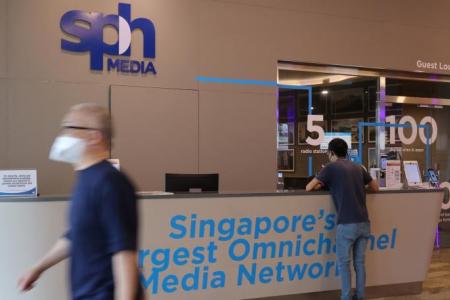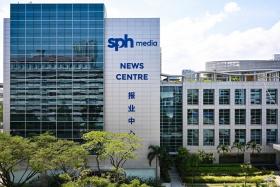SPH Media Trust will have to demonstrate that it is worthy of funding: News veteran Patrick Daniel
The up to $180 million annually that the Government will give to SPH Media Trust (SMT) over the next five years comes with a heavy responsibility, and everyone in the not-for-profit company will have to demonstrate that they are worthy of it, said news veteran Patrick Daniel on Thursday (Feb 17).
He added at a public lecture that the company will use the grant prudently and account for its use.
He also welcomed the assurance of editorial independence from the Government, quoting Minister for Communications and Information Josephine Teo, who said in Parliament on Tuesday that "no one gains if these products lack credibility and are ignored by audiences".
Mr Daniel, who is SMT interim chief executive but speaking in his personal capacity, said the funding is also an acknowledgement of what the company has been saying - that trusted and credible media is a public good.
"But it can't just be a slogan. We'll have to live it, we'll have to guard it, we'll have to make sure that we don't betray it."
His remarks at the first of his three lectures on the Singapore media as the Institute of Policy Studies' 11th S R Nathan Fellow for the Study of Singapore, comes amid scrutiny in Parliament on how SMT will use the funding, which was revealed on Tuesday.
Mr Daniel noted that Leader of the Opposition Pritam Singh had asked in Parliament how Singaporeans can be assured that SMT publications would not be tainted by allegations of political interference.
He said: "The problem for us is that... to taint with allegation is easy, to disprove or prove them is harder. This is why I have all along taken the line... that even if we get funding, the proof is in the pudding, in particular, the judgment of readers. And if we lack credibility, no one will read us, no matter how much money we get."
Former Accenture Singapore chairman, Ms Teo Lay Lim, will take on the role of chief executive of SMT on March 1.
At a question-and-answer session moderated by Ambassador-at-Large Chan Heng Chee, Mr Daniel also rebutted the perception that SMT publications are government mouthpieces that will not run pieces contrary to the Government's views.
He said opposition party members often criticised him over this, but added that the very fact people know about them is because the mainstream media has written about them. He added that People's Action Party MPs also often complain about their views or articles not being published.
His lecture also gave an overview of the history of the Singapore media, noting that the Government's intervention in the media landscape since independence has been in two areas, through crackdowns against newspapers and editors, and also reshaping of the media sector.
In particular, crackdowns in the 1970s led to the closure of the Eastern Sun, the suspension of the licence of The Singapore Herald, and arrests of top executives at Nanyang Siang Pau.
A period of mergers followed, driven by the Government. First, rival papers Nanyang Siang Pao and Sin Chew Jit Poh merged in 1982 to form Singapore News and Publications Limited (SNPL). Then, SNPL and Straits Times Press merged to form Singapore Press Holdings (SPH).
In 2000, when the birth of AOL Time Warner in the US stoked fears here that the old media business model would be overturned, there was an attempt to merge SPH and Mediacorp, said Mr Daniel.
This did not happen, but SPH was given a TV licence and Mediacorp a newspaper permit, to compete. Both companies bled money, and after four years, the media industry went back to square one, he added.
Mr Daniel, who has held positions including editor-in-chief of SPH's English/Malay/Tamil Division and deputy CEO of SPH, also addressed the criticism that SPH had not moved fast enough to address digital disruption.
He said SPH faced the incumbent's dilemma because its legacy business was still lucrative. "It's not as if we had our heads in the sand and didn't see the coming disruptive technology... our problem simply was that disrupting and cannibalising your own lucrative legacy business is easier said than done."
Over time, as digital ad revenues grew - Google's ad revenue grew from zero in 2000 to US$209 billion (S$280.8 billion) last year - SPH saw a gradual, secular decline, and eventually made a loss in 2020, he added.
Even then, there was one "saving grace", he said, noting that Singapore's legacy media never lost its audience. For instance, across all of SPH's platforms, the reach is about 73 per cent, boosted by growth in the digital audience, he added.
He said the SMT model, which is a combination of the commercial and public model, will take some time to work through, adding that he hoped it would bring good results.
Get The New Paper on your phone with the free TNP app. Download from the Apple App Store or Google Play Store now


